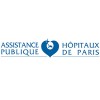Immunogenicity and Tolerance of Two Strategies of Anti-HAV Vaccination in HIV-infected Patients (HEPAVAC)
HIV Infection

About this trial
This is an interventional treatment trial for HIV Infection focused on measuring HIV, hepatitis A, vaccine, HBV and/or HCV co-infection
Eligibility Criteria
Inclusion Criteria: VIH-1 infection, aged 18-55 years negative anti-HAV IgG CD4 cell count between 200 and 500/mm3 Exclusion Criteria: prior anti-HAV vaccination immunosuppressive treatment splenectomy Prothrombin time < 50%, platelets< 50 000/mm3 fever serum alanine aminotransferase (ALT) or aspartate aminotransferase (AST) activity > 2 ULN for non co-infected patients, > 5 ULN for co-infected patients
Sites / Locations
- CIC de vaccinologie Cochin Pasteur, Service de médecine interne, hôpital Cochin
- CISIH, Hôpital de Strasbourg
Arms of the Study
Arm 1
Arm 2
Experimental
Active Comparator
group1:3 administrations of Havrix
group2: 2 administrations of Havrix
group 1 received immunisation with Havrix (1440IU) at weeks S0, S4, S24
group 2 received usual immunisation with Havrix (1440IU) at weeks S0 and S24
Outcomes
Primary Outcome Measures
Secondary Outcome Measures
Full Information
1. Study Identification
2. Study Status
3. Sponsor/Collaborators
4. Oversight
5. Study Description
6. Conditions and Keywords
7. Study Design
8. Arms, Groups, and Interventions
10. Eligibility
12. IPD Sharing Statement
Learn more about this trial
